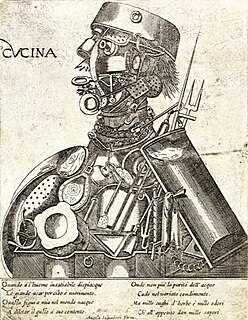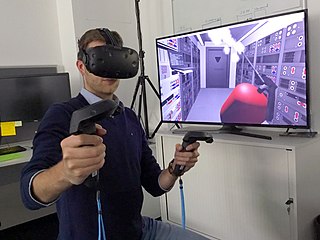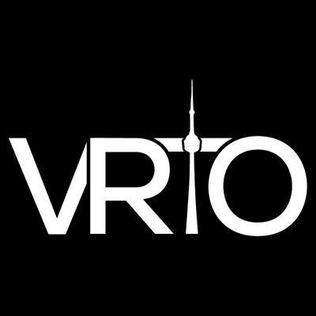
Cyberspace is a concept describing a widespread interconnected digital technology. "The expression dates back from the first decade of the diffusion of the internet. It refers to the online world as a world 'apart', as distinct from everyday reality. In cyberspace people can hide behind fake identities, as in the famous The New Yorker cartoon." The term entered popular culture from science fiction and the arts but is now used by technology strategists, security professionals, government, military and industry leaders and entrepreneurs to describe the domain of the global technology environment, commonly defined as standing for the global network of interdependent information technology infrastructures, telecommunications networks and computer processing systems. Others consider cyberspace to be just a notional environment in which communication over computer networks occurs. The word became popular in the 1990s when the use of the Internet, networking, and digital communication were all growing dramatically; the term cyberspace was able to represent the many new ideas and phenomena that were emerging.

Virtual reality (VR) is a simulated experience that employs pose tracking and 3D near-eye displays to give the user an immersive feel of a virtual world. Applications of virtual reality include entertainment, education and business. Other distinct types of VR-style technology include augmented reality and mixed reality, sometimes referred to as extended reality or XR, although definitions are currently changing due to the nascence of the industry.
In futurism and science fiction, the metaverse is a hypothetical iteration of the Internet as a single, universal and immersive virtual world that is facilitated by the use of virtual reality (VR) and augmented reality (AR) headsets. In colloquial use, a metaverse is a network of 3D virtual worlds focused on social connection.
Keram Malicki-Sánchez is an actor, musician, writer, filmmaker, interactive media and virtual reality developer, multimedia artist, and event producer.

Virtual art is a term for the virtualization of art, made with the technical media developed at the end of the 1980s. These include human-machine interfaces such as visualization casks, stereoscopic spectacles and screens, digital painting and sculpture, generators of three-dimensional sound, data gloves, data clothes, position sensors, tactile and power feed-back systems, etc. As virtual art covers such a wide array of mediums it is a catch-all term for specific focuses within it. Much contemporary art has become, in Frank Popper's terms, virtualized.

Immersion into virtual reality (VR) is a perception of being physically present in a non-physical world. The perception is created by surrounding the user of the VR system in images, sound or other stimuli that provide an engrossing total environment.
A projection augmented model is an element sometimes employed in virtual reality systems. It consists of a physical three-dimensional model onto which a computer image is projected to create a realistic looking object. Importantly, the physical model is the same geometric shape as the object that the PA model depicts.

Virtuality is a line of virtual reality gaming machines produced by Virtuality Group, and found in video arcades in the early 1990s. The machines deliver real time gaming via a stereoscopic visor, joysticks, and networked units for multi-player gaming.

Crystal River Engineering Inc. was an American technology company best known for their pioneering work in HRTF based real-time binaural, or 3D sound processing hardware and software. The company was founded in 1989 by Scott Foster after he received a contract from NASA to create the audio component of VIEW, a virtual reality based training simulator for astronauts. Crystal River Engineering was acquired by Aureal Semiconductor in 1996.

Nicole Stenger is a French-born American artist, pioneer in virtual reality and Internet movies. In 1989 to 1991, she was a research Fellow at MIT. In 1991 to 1992, she was a Visiting Scholar at the Human Interface Technology Laboratory (Hitlab) in Seattle. Her works have been featured in the SIGGRAPH Art Show, the FILE Festival, the JavaMuseum, the Cartier Art Foundation and are part of the Archive of Digital Art (ADA). In 2013, she was included in the "Contemporary women artists on the web" collection of the National Museum of Women in the Arts, in Washington DC. To this day, Stenger is considered to be one of the first artists to explore the artistic virtual reality medium.
Festival of International Virtual & Augmented Reality Stories (FIVARS) is a media festival that showcases stories or narrative forms from around the world using immersive technology that includes virtual reality, augmented reality, live VR performance theater and dance, projection mapping and spatialized audio. It is considered to be Canada's first dedicated virtual or augmented reality stories festival, and was the world's first virtual reality festival dedicated completely and exclusively to narrative pieces. FIVARS is operated by Constant Change Media Group, Inc. and VRTO.

Started in 2015, as a virtual reality Meetup Group in Toronto, VRTO launched the VRTO Virtual & Augmented Reality World Conference & Expo in June 2016 – an international exhibition and professional conference exploring arts, culture and science through immersive technologies. Its inaugural year – held at the Mattamy Centre – featured keynotes from University of Toronto Professor Steve Mann, Hollywood film director Brett Leonard – director of The Lawnmower Man, Chief Digital Officer Ana Serrano of the Canadian Film Centre and Phil Lelyveld of USC.
Ulrike Gabriel was born in 1964 in Munich and is an artist and researcher focussing on generative systems. Ulrike co-founded the laboratory Codelab, Berlin where she spent some time as a director. She also worked in ecological agriculture in Argentina from 2003 to 2006. Ulrike was also a professor at the University of Art and Design HfG Offenbach (2006-2012). At this university, she led the teaching area of Electronic Media. She studied philosophy at the Ludwig Maximilian University from 1983–1985 and painting and applied graphics at the Academy of Fine Arts from 1985-1991 in Munich. After that she was a post-graduate at the Institute for New Media at the Städelschule, Frankfurt (1991-1992) and a research fellow at the Academy of Media Arts Cologne, department for media science (1996-1998).
Virtual reality (VR) is a computer application which allows users to experience immersive, three dimensional visual and audio simulations. According to Pinho (2004), virtual reality is characterized by immersion in the 3D world, interaction with virtual objects, and involvement in exploring the virtual environment. The feasibility of the virtual reality in education has been debated due to several obstacles such as affordability of VR software and hardware. The psychological effects of virtual reality are also a negative consideration. However, recent technological progress has made VR more viable and promise new learning models and styles for students. These facets of virtual reality have found applications within the primary education sphere in enhancing student learning, increasing engagement, and creating new opportunities for addressing learning preferences.

A virtual reality game or VR game is a video game played on virtual reality (VR) hardware. Most VR games are based on player immersion, typically through head-mounted display unit or headset with stereoscopic displays and one or more controllers.
Volumetric capture or volumetric video is a technique that captures a three-dimensional space, such as a location or performance. This type of volumography acquires data that can be viewed on flat screens as well as using 3D displays and VR goggles. Consumer-facing formats are numerous and the required motion capture techniques lean on computer graphics, photogrammetry, and other computation-based methods. The viewer generally experiences the result in a real-time engine and has direct input in exploring the generated volume.

Virtual reality applications are applications that make use of virtual reality (VR), an immersive sensory experience that digitally simulates a virtual environment. Applications have been developed in a variety of domains, such as education, architectural and urban design, digital marketing and activism, engineering and robotics, entertainment, virtual communities, fine arts, healthcare and clinical therapies, heritage and archaeology, occupational safety, social science and psychology.
Jessica Brillhart is an American immersive director, writer, and theorist, known for her pioneering techniques in virtual reality filmmaking.
Immersive learning is a learning method which students being immersed into a virtual dialogue, the feeling of presence is used as an evidence of getting immersed. The virtual dialogue can be created by two ways, the usage of virtual technics, and the narrative like reading a book. The motivations of using virtual reality (VR) for teaching contain: learning efficiency, time problems, physical inaccessibility, limits due to a dangerous situation and ethical problems.
Cinematic virtual reality(Cine-VR) is an immersive experience where the audience can look around in 360 degrees while hearing spatialized audio specifically designed to reinforce the belief that the audience is actually in the virtual environment rather than watching it on a two-dimensional screen. Cine-VR is different from traditional Virtual Reality which uses computer generated worlds and characters more akin to interactive gaming engines, while cine-VR uses live images captured thorough a camera which makes it more like film.










